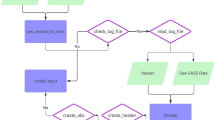Abstract
The advancement of mobility is leading to increased convenience and expanding the scope of human activities beyond imagination. Among the existing modes of mobility, space launch vehicles stand out as the means capable of traveling the farthest. The global competition and interest surrounding them are notably intense. This article aims to introduce the significance of space launch vehicles as a form of mobility and shed light on the management activities required to ensure their reliable service.
Graphical Abstract







Similar content being viewed by others
Data availability
There are no data obtained for this report.
References
D.G. Sung, Dangeun, our star no. 1 satellite. Electron. Eng. J. 19(10), 1025–1031 (1992)
Y. W, Introduction to the development and production of Korean Projectiles (Nuriho). A paper collection of the Spring and Autumn academic conference of the Korean machinery and processing society, 1–1.1 (2023)
A.S. Erickson, Revisiting the US-Soviet space race: comparing two systems in their competition to land a man on the moon. Acta Astronaut. 148, 376–384 (2018)
H.H. Cho, Why do humans want to explore the universe? Satell. Commun. Space Ind. 6(1), 121–130 (1998)
Korea Aerospace Research Institute, World Space Development History (Korea Aerospace Research Institute, Daejeon, 1998), pp.1–87
Y.S. Cho, Review of space industry and technology for asteroid mining. J. Korean Soc. Miner. Energy Resour. Eng. 58(6), 640–651 (2021)
Global space mining market size, status and forecast 2020–2026 (2020), https://www.360marketupdates.com/global-space-mining-market-16439050. Accessed 3 Aug 2023
Space industry (2023), https://en.wikipedia.org/wiki/Space_industry. Accessed 3 Aug 2023
Harver analytics (2020), https://www.morganstanley.com/ideas/investing-in-space. Accessed 3 Aug 2023
J.J. Mearsheimer, The causes and consequences of the Ukraine war. Horiz. J. Int. Relat. Sustain. Dev. 21, 12–27 (2022)
K.T. Park, Research on the necessity of developing aerial projectiles that will lead the development of national space power. Mil. Sci. Res. 15(1), 39–61 (2022)
J.B. Lim, Expansion of the concept of space security and our response attitude in the era of increased defense space importance. SPEC Insight 2, 1–25 (2022)
The 4th basic plan for the promotion of space development for the implementation of the future space economy roadmap (proposal). (2022)
SpaceLaunchNow (2023), https://spacelaunchnow.me/launch/. Accessed 3 Aug 2023
L.A. Fernández, C. Wiedemann, V. Braun, Analysis of space launch vehicle failures and post-mission disposal statistics. Aerotec. Missili Spaz. 101(3), 243–256 (2022)
ECSS-S-ST-00C-Rev.1, ECSS system—description, implementation and general requirements. (2020)
R. Alarcon, F. Wild, C. Perey, M.M. Genescà, J.G. Martínez, J.X. Martí, M.J. Olmos, D. Dubert, Augmented reality for the enhancement of space product assurance and safety. Acta Astronaut. 168, 191–199 (2020)
F. Groen, NASA Office of Safety and Mission Assurance. in Trilateral safety and mission assurance meeting (no. HQ-E-DAA-TN35535). (2016)
ECSS-Q-ST-10C-Rev.1, Space product assurance—product assurance management. (2016)
NASA TV (2017), https://www.nasa.gov/centers/wstf/about_us/safety_and_mission_assurance/index.html. Accessed 3 Aug 2023
VLS-1 (2022), https://en.wikipedia.org/wiki/VLS-1. Accessed 3 Aug 2023
S.C. Kim, UAM and reliability. Mech. J. 63(5), 34–40 (2023)
P. B. Crosby, Quality is free (Mentor, January 1980), p. 270.
R. E. Smith, MIL-STD-882E. Department of Defence (2012)
A. E. Colon, P. M. Rivera, Safety and mission assurance acronyms, abbreviations, and definitions (no. HQ-E-DAA-TN53787). (2018)
W. R. Monteith, System safety program, AST-1, Office of Commercial Space Transportation FAA. (2021)
Streamlined launch and reentry license requirements (2020), https://www.federalregister.gov/documents/2020/12/10/2020-22042/streamlined-launch-and-reentry-license-requirements. Accessed 6 Aug 2023
K.S. Choi, J.H. Ko, H.S. Shim, W.R. Noh, Development of space launch vehicle flight safety analysis system. Aerospace Technol. 7(2), 123–130 (2008)
SpaceX starship super heavy project at the Boca Chica launch site (2023), https://www.faa.gov/space/stakeholder_engagement/spacex_starship. Accessed 5 Aug 2023
Mike Wall, SpaceX, FAA seek to dismiss environmental groups’ Starship lawsuit, SPACE.com (2023), https://www.space.com/spacex-faa-seek-dismiss-starship-lawsuit
J. K. Choi, Learn the policy roadmap for the realization of space power, Hello T (2023), https://www.hellot.net/mobile/article.html?no=77275
J. Foust, Vega C suffers setback in return to flight effort, SAPCENEW, (2023), https://spacenews.com/vega-c-suffers-setback-in-return-to-flight-effort/
S. S. Park, Design flaw blamed for failed debut of South Korea’s new satellite launcher, SPACENEWS, (2022)
A. Palun, P. Lascombes, Space logistics: achieving end-to-end mobility for space, ROOM, (2022), https://room.eu.com/article/space-logistics-achieving-end-to-end-mobility-for-space
A. Mann, What was the space race? SPACE.com, (2023), https://www.space.com/space-race.html
Author information
Authors and Affiliations
Corresponding author
Rights and permissions
Springer Nature or its licensor (e.g. a society or other partner) holds exclusive rights to this article under a publishing agreement with the author(s) or other rightsholder(s); author self-archiving of the accepted manuscript version of this article is solely governed by the terms of such publishing agreement and applicable law.
About this article
Cite this article
Jo, H.S., Yoo, S.W. Mobility to space: space launch vehicle. JMST Adv. 5, 45–52 (2023). https://doi.org/10.1007/s42791-023-00052-y
Received:
Revised:
Accepted:
Published:
Issue Date:
DOI: https://doi.org/10.1007/s42791-023-00052-y




